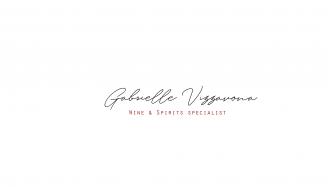The story began in 1973 when Georges Bertrand acquired the family property in Villemajou. Gérard Bertrand, who would pioneer the revival of Languedoc wines, transformed the family business into an empire that now boasts fifteen vineyards covering 850 hectares of vines spread over some thirty Languedoc appellations. These provide the basis for crafting over 130 wines, ranging from fruit-forward offerings retailing in supermarkets to top Languedoc growths showing exemplary complexity that are a match for gourmet foods. In 2002, serious consideration was given to site-expressiveness, the result of which was the conversion of the entire vineyard area to biodynamic winegrowing. The process will be completed by 2023, crowning Gérard Bertrand as the world's largest biodynamic producer, and flying in the face of conventional wisdom whereby this type of winegrowing is not compatible with extensive areas under vine.
Gabrielle Vizzavona: How did your interest in biodynamics begin?
Gérard Bertrand: At the age of 22, I had a few liver problems that were resolved through homeopathy. I have been treating myself with it for over thirty years. It has allowed me to understand the power of the information conveyed and how the ultra-sensitive can provide a remedy for a machine as complex as the human body. Obviously, this also involves a spiritual and philosophical dimension. In 2002, I read Rudolph Steiner's ‘The Agriculture Course’. It was not easy reading. I read it three times in a row, because the first time I didn't understand an awful lot! I am a logical thinker, so I then divided 4 hectares of the oldest vines at Domaine de Cigalus into two and farmed half conventionally and the other half biodynamically. Over 2 years, we witnessed a spectacular difference in the vineyard and the winery. The vines were due to be pulled, but through this, we gave them a new lease of life. The wines were fresher and more mineral. We gradually increased the proportion of vines farmed biodynamically to 850 hectares that are now either converted or in the conversion phase. I have over a hundred people involved full time in the biodynamic programme and it has changed their lives as much as it has mine.
GV: Is it vital for the future that there be more conversions?
GB: There is nothing vital about it. We don't have to drink wine to survive, whereas we have to eat. Wine must at least provide pleasure and flavour and even convey emotion and a message. There are myriad varietals and as many potential varietal flavours. But when you establish a unique chemistry between a grape variety, a vineyard site and a climate, you produce a unique taste. And ultimately, the taste of ‘somewhere’ is more exciting than the taste of ‘something’.
GV: Is the ‘taste of somewhere’ driven by biodynamics?
GB: Biodynamics reveals the taste of ‘terroir’ and allows the vines to go further and have better balance. When soils and sub-soils are alive and ecosystems in harmony, the root system develops and this encourages site-expressiveness. This biosphere deserves utmost attention. On compact soils, where many chemicals are used, microbial life is limited and therefore the plant interacts less with the soil.
GV: In recent years, many media have made alarming revelations about the use of chemicals to treat vines. Are the residues that can sometimes be found in wine hazardous for people’s health?
GB: No, because 99% of plant protection product residues are leached out during fermentation. Only one percent at most remains, and this is not harmful to health. That is not the issue. In my opinion, it is about committed activism by man and a winegrower with his eyes wide open. Not using chemicals implies that we are strengthening biodiversity and microbial life and protecting the soil, the subsoil and therefore rivers, because when it rains, the water seeps into the rivers. There are potentially pesticide residues in the water we drink, and the fewer pesticide residues, the better. There are two issues at stake: firstly, improving the intrinsic quality of the wine, and secondly, our sensitivity about bolstering the expressiveness of a vineyard site and provenance. Organic and biodynamic techniques help achieve this.
GV: What do you say to winegrowers who feel that the switch-over is challenging considering the weather patterns they are experiencing?
GB: Everything is challenging. Going organic is a complete process. Using biodynamics implies taking it a stage further, and becoming aware of the fact that we are all interconnected. When we look at the sky, we have to understand that there are more planets in the universe than there are human beings on earth. All this brings us back to the microcosm and the macrocosm, the infinitely small and the infinitely large, with us in the middle. Human beings are not among the plant, mineral and animal kingdoms by accident. We have a role to play. Every winegrower needs to awaken their conscience and ask themselves what their priorities are. Money and success may be the consequence, but certainly cannot be the cause, which is to make the best possible wine.
GV: Do you think we are headed in that direction?
GB: Yes, more and more winegrowers are making precision wines. Between 1980 and 2000, we successfully improved the average quality of the wines through winemaking techniques and vineyard management. For the last twenty years, bad wines have become a thing of the past. The problem is that we have taken standardisation a little too far. Now we have to try to regain the uniqueness of place through techniques that we had shunned. We have to keep the best of modern techniques and transcend them by reverting to the very essence of a wine that comes from vines and a particular vineyard site.
